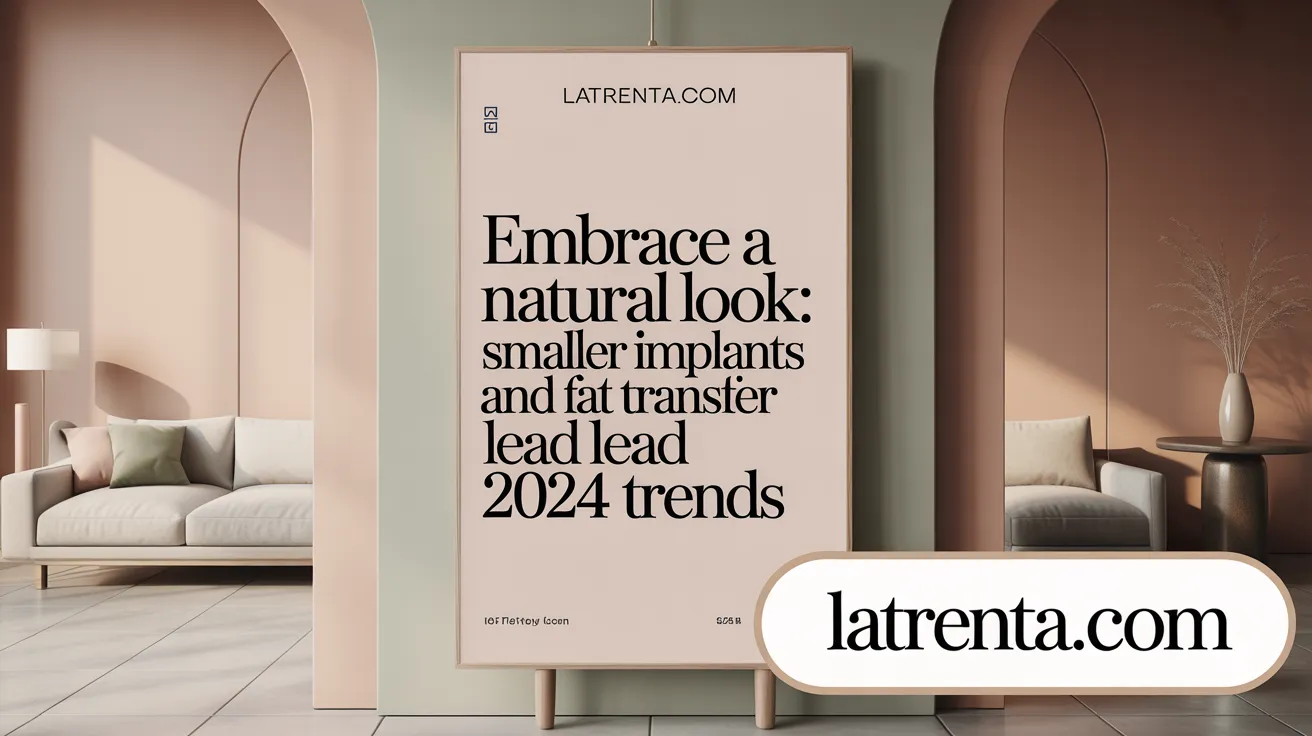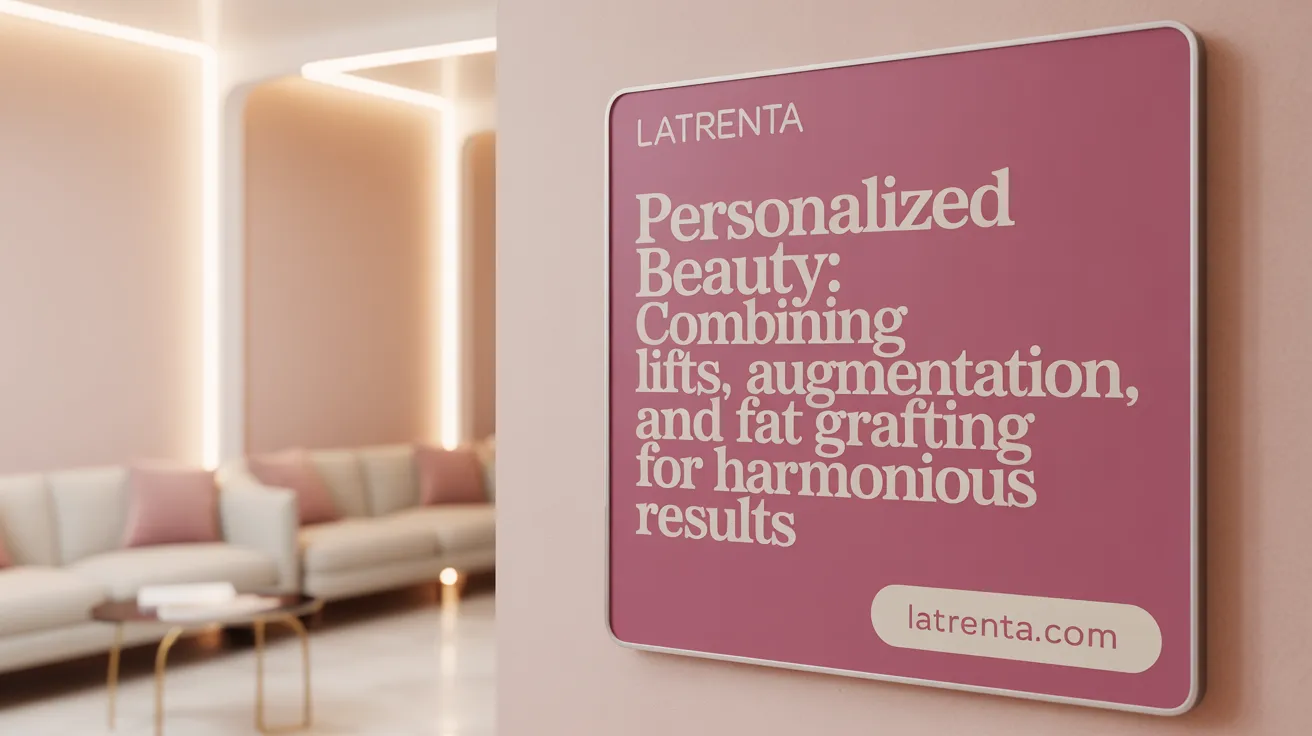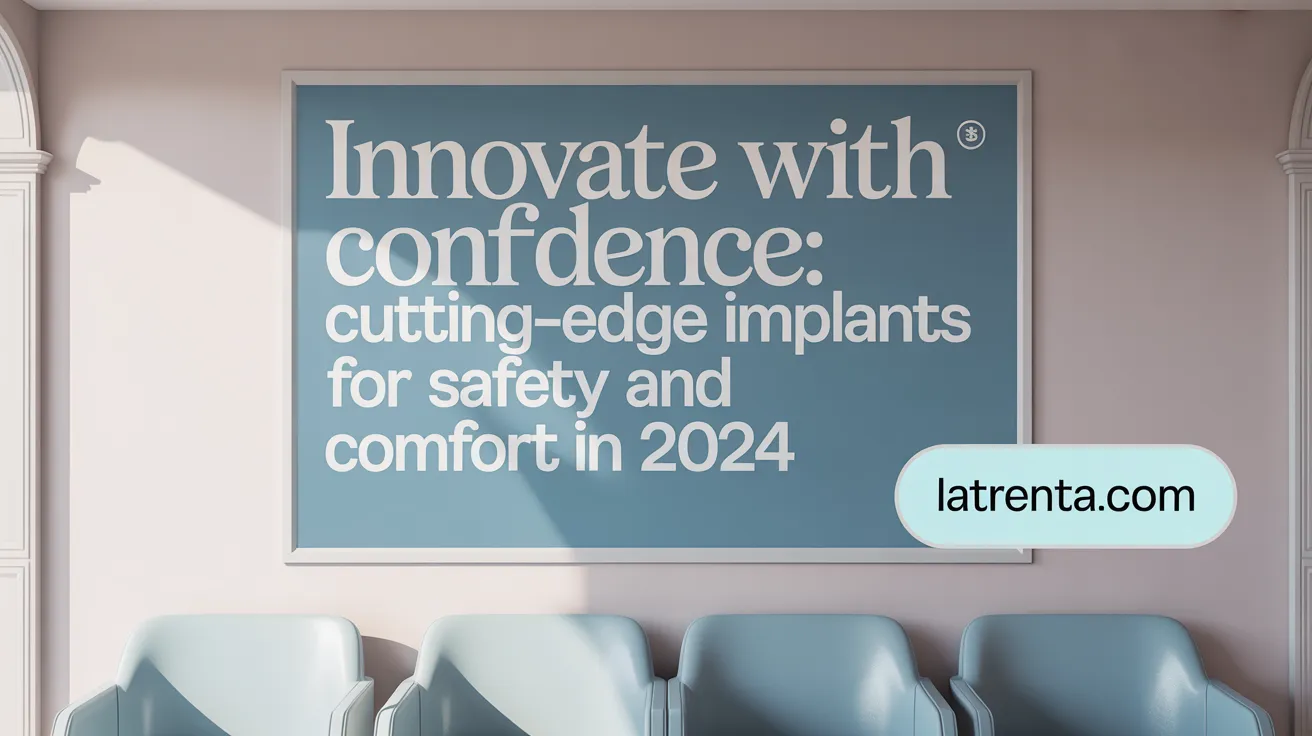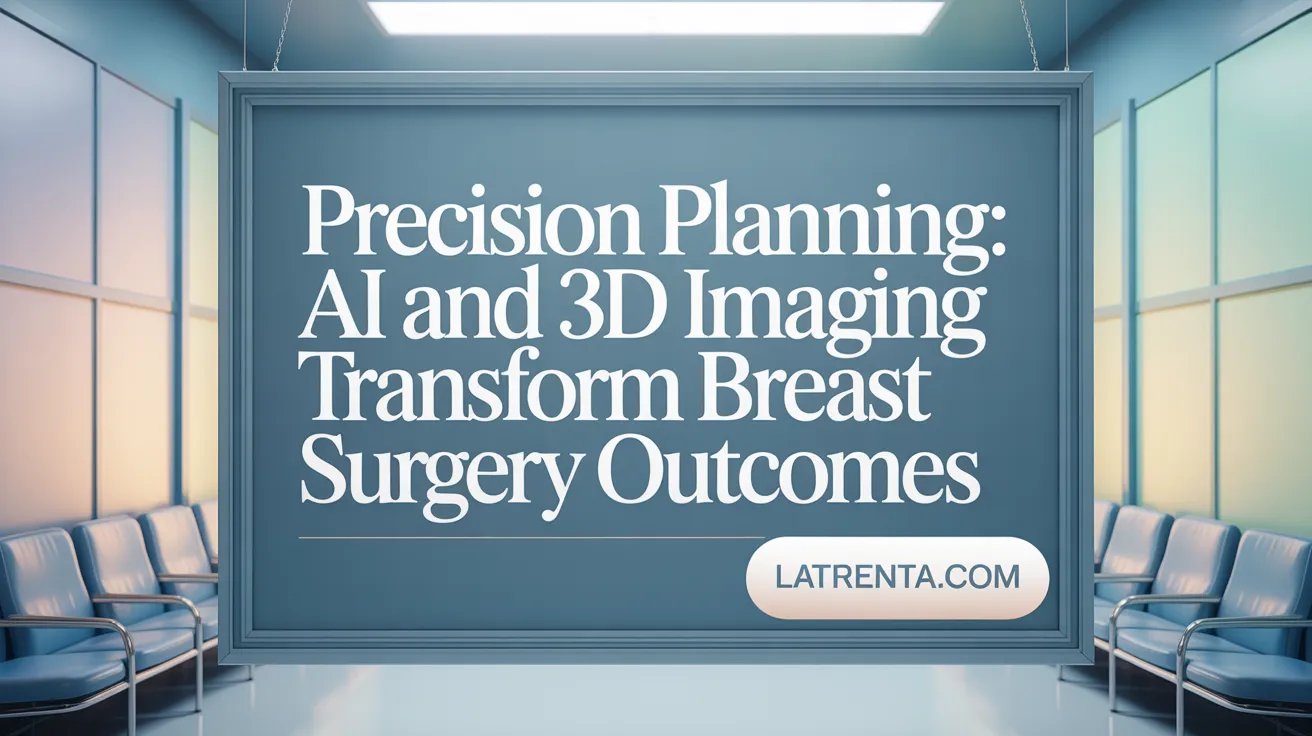Embracing Natural Beauty: The 2024 Shift in Breast Surgery
The landscape of breast surgery and aesthetic enhancements in 2024 continues its evolution towards natural-looking results, advanced technology integration, and personalized patient care. Board-certified surgeons are embracing minimally invasive techniques, cutting-edge implant technology, and hybrid procedures, all underscored by a commitment to safety and bespoke outcomes. From smaller, proportionate breast implants and fat-transfer methods to AI-assisted surgical planning and regenerative therapies, these trends reflect patients' desires for subtle enhancements that harmonize with their unique anatomy and lifestyles.
Key Facts on Breast Augmentation and Reconstruction Trends 2024
- There is a shift toward smaller, natural-looking breast implants in 2024, emphasizing subtle and proportionate enhancements.
- Autologous fat transfer is increasingly popular, offering natural softness and contour through harvesting fat from the patient’s body.
- Hybrid breast procedures combining lifts, augmentation, and fat transfer are on the rise for personalized, harmonious results.
- Advancements include cohesive gel silicone implants, lighter weight options, and FDA-approved Motiva implants for safer, more natural results.
- Minimally invasive techniques with short scars and inframammary incisions are preferred for discreet recovery and faster healing.
- Use of AI and 3D imaging enhances surgical planning, allowing personalized implant selection and realistic visualizations.
- There is a rising focus on natural breast lifts that maintain size, with potential combination augmentation for more comprehensive improvements.
- Injectable fillers offer non-surgical, quick, and subtle breast contouring options suitable for mild enhancements.
- Integrating regenerative medicine techniques and holistic care promotes natural tissue health and rejuvenation.
- Innovations such as robotic nipple-sparing mastectomy improve sensation preservation and aesthetic outcomes in breast reconstruction.
1. Natural-Looking Breast Augmentation with Smaller Implants and Fat Transfer

Shift Towards Smaller, Proportionate Breast Implants
In 2024, there is a clear trend favoring smaller breast implants that better complement a patient's natural body frame. Instead of opting for large, dramatic sizes, many patients seek modest, proportionate volumes, often in the range of small C or large B cup sizes. This reflects a growing preference for subtle, feminine enhancements that feel balanced and natural.
Rising Popularity of Autologous Fat Transfer (Fat Grafting)
An increasing number of patients are choosing autologous fat transfer, also known as fat grafting, to achieve breast augmentation. This technique involves harvesting fat from other parts of the body via liposuction and injecting it into the breasts. Fat transfer adds a natural softness and contour unmatched by implants alone, making it especially appealing for those desiring a gentle enhancement.
Patient Preference for Subtle, Feminine, and Balanced Enhancements
Aesthetic goals now focus on subtle refinements that enhance rather than overpower one's silhouette. Women seek results that are delicate and harmonious with their overall physique, moving away from the exaggerated or artificial looks of previous decades (2024 Plastic Surgery Statistics Report).
Customized Implant Sizing and Shape for Harmonious Results
Surgeons leverage advanced imaging technologies like 3D imaging and AI-assisted planning to tailor implant size, shape, and placement. This customization ensures results that align with each patient's body proportions and aesthetic desires, producing a balanced and natural outcome.
Together, these trends underscore a shift towards natural breast aesthetics, with smaller implants and fat transfer playing central roles in 2024's breast augmentation landscape.
2. Hybrid Breast Procedures: Combining Lifts, Augmentation, and Fat Transfer

Increasing Demand for Hybrid Surgeries Combining Breast Lift with Augmentation
In 2024, the popularity of hybrid breast procedures, which combine breast lifts with augmentation, continues to rise. Patients seek to address sagging while also restoring or enhancing volume, benefiting from the complementary effects of these combined surgeries.
Use of Fat Transfer Along with Implants to Enhance Contour and Smoothness
Fat transfer techniques are increasingly used alongside implants to provide a more natural breast contour and softer transitions. By harvesting fat from other body areas and injecting it into the breasts, surgeons achieve enhanced smoothness and balanced aesthetics, as highlighted in the latest trends in breast augmentation techniques.
Benefits of Combining Procedures for Personalized and Natural Results
Combining lifts, augmentation, and fat grafting allows surgeons to tailor procedures to individual patient anatomy and goals. This customized approach promotes natural-looking, proportionate results that maintain breast shape and improve overall harmony, consistent with recommendations for personalized breast procedures.
Tailored Surgical Planning to Address Sagging and Volume Loss
Advanced surgical planning, often incorporating 3D imaging and AI, enables precise assessment of breast sagging and volume deficit. This planning guides the combination of techniques, ensuring that both lift and augmentation address specific patient needs effectively and safely.
3. Advancements in Breast Implant Technology for Enhanced Safety and Comfort

Introduction of cohesive gel silicone implants with improved materials
Breast implant technology in 2024 emphasizes safety and natural results by using cohesive gel silicone implants. These implants feature a thick gel that maintains shape even if ruptured, reducing migration risks and enhancing durability. This material mimics natural breast tissue for a more realistic appearance and feel.
Lighter implants to reduce tissue stress and improve comfort
Newer breast implants are designed to be lighter, which reduces strain on breast tissue and muscles. This advancement helps in minimizing discomfort and the risk of sagging over time, promoting longer-lasting aesthetic outcomes with greater patient comfort. For more details, see the Top 5 Breast Augmentation Trends for 2025.
Surface innovations like microtextured and smooth implants to minimize complications
Surface technology has progressed with microtextured implants that combine the benefits of smooth and textured surfaces. These implants lower complication rates, such as capsular contracture, by reducing immune reaction while maintaining implant stability. Learn more about Motiva breast implants and surface innovations.
FDA approval of Motiva implants offering natural feel and lower capsular contracture risk
Motiva breast implants, approved by the FDA in 2024, represent a significant innovation. They use advanced bonding technology that reduces rupture risk and feature a microtextured surface that feels silky yet is classified as smooth. Clinical studies show an extremely low rate of capsular contracture (~1% at 3 years), offering patients safer and more natural-feeling options for breast augmentation. Additional information is available in the Motiva implants FDA approval details and Top 5 Breast Augmentation Trends for 2025.
4. Minimally Invasive Techniques: Smaller Incisions and Faster Recovery

Trends Towards Inframammary Fold and Short-Scar Incisions to Reduce Visible Scarring
In 2024, breast augmentation trends 2025 increasingly favors incisions placed at the inframammary fold, which hides scars beneath the breast crease for discreet healing. Additionally, short-scar techniques like the "lollipop incision" are gaining popularity, offering minimally invasive access while minimizing visible scarring.
Submuscular and Subfascial Implant Placements for Natural Appearance and Safety
Submuscular (under the muscle) implant placement remains the preferred choice, as it provides a more natural breast contour, reduces complications such as capsular contracture, and improves implant stability. Subfascial placement—just beneath the fascia covering the muscle—also offers natural aesthetics with potentially faster recovery.
Use of Advanced Anesthesia and Surgical Tools Minimizing Tissue Disruption
Advancements in anesthesia protocols and surgical tools enable surgeons to perform breast augmentations with less tissue trauma. Smaller incisions paired with precise dissection techniques and improved instruments reduce intraoperative damage, leading to less postoperative pain and swelling.
Speeds Recovery Times and Enhances Patient Satisfaction in Breast Surgery
These minimally invasive approaches notably shorten recovery periods, allowing patients to resume normal activities sooner. The combination of less visible scarring, natural outcomes, and faster healing significantly boosts patient satisfaction and confidence in their results.
5. Personalized Surgical Planning with AI and 3D Imaging Innovations

Enhancing Visualization with 3D Imaging and Virtual Reality
Advanced technologies like 3D imaging and virtual reality simulators, such as Crisalix VR, allow patients to visualize potential surgical outcomes before the procedure. These tools provide a realistic preview, helping both surgeons and patients align expectations clearly.
AI-Powered Predictive Analysis
Artificial intelligence supports surgeons by analyzing patient data to predict surgical results. This helps tailor procedures more accurately to individual anatomical and aesthetic needs, improving the precision of surgeries like breast augmentation. For more details, see AI in breast surgery planning.
Improved Patient Communication and Decision-Making
These innovative tools enable surgeons to communicate complex surgical plans more effectively. Patients gain deeper understanding, which fosters informed decision-making and greater satisfaction with personalized treatment plans. This aligns with trends in personalized care in plastic surgery.
Customized Implant Selection and Placement
Personalization extends to selecting implant size, shape, and placement. Using AI and 3D imaging, surgeons can customize these factors based on the patient's unique body frame and aesthetic goals, leading to more natural and proportionate results. Explore customized breast shape and implant planning for more insights.
6. Rising Popularity of Breast Lifts Focused on Natural Shape and Position
Breast lift surgery addressing sagging without necessarily increasing size
Breast lift surgery, or mastopexy, has gained increasing popularity for its ability to raise and reshape sagging breasts, focusing on improving shape and nipple position rather than increasing breast size. This procedure effectively corrects droopiness caused by factors such as aging, pregnancy, or weight fluctuations (Breast lift surgery).
Patient preference for maintaining natural breast size and shape
Many patients now prefer breast lifts that maintain their natural breast size and contours, emphasizing a more youthful and uplifted appearance without adding volume. This aligns with the broader 2024 Plastic Surgery Statistics Report trend toward natural-looking results and personalized aesthetic outcomes.
Combination with augmentation for volume and lift when desired
For women seeking both lift and increased volume, combining a breast lift with augmentation is increasingly common. Hybrid procedures allow tailored enhancement, providing both shape and size improvements with natural aesthetics (Combination with augmentation.
Modern techniques minimizing scarring and optimizing natural contours
Advancements in surgical techniques have made breast lifts less invasive, utilizing shorter incisions and refined tissue handling to minimize visible scarring. These modern methods enable more precise tissue tightening and shaping, resulting in natural contours that complement each patient's anatomy (Modern surgical breast lift techniques.
7. Non-Surgical Breast Enhancements Using Injectable Fillers
What are non-surgical breast enhancements using injectable fillers?
Non-surgical breast augmentation uses hyaluronic acid-based fillers to subtly enhance breast volume and shape without surgery. This method is gaining popularity as a quick, minimally invasive option for patients seeking modest enhancements, as highlighted in the latest trends in breast augmentation techniques.
How do injectable fillers compare to traditional breast augmentation?
Unlike surgical implants, injectable fillers allow for targeted volume increase and contour refinement with no incisions. The procedure typically takes a short time to perform and offers immediate visual improvement, reflecting the rise in minimally invasive breast augmentation and the growing popularity of non-surgical breast augmentation options.
What are the advantages of this technique?
- Minimal downtime and discomfort
- No anesthesia or large incisions required
- Suitable for patients hesitant about surgery
- Provides natural-looking, subtle volume increases
These benefits align with the shift toward minimally invasive plastic surgery and the trend of delivering natural-looking enhancements.
Who is the ideal candidate for injectable breast fillers?
This approach is best suited for individuals who desire mild to moderate enhancement or shape refinement. It can serve as an alternative for those who want to avoid the risks and recovery associated with surgery, consistent with patient preferences for personalized and natural plastic surgery results.
Current trends in 2024
The use of hyaluronic acid fillers for breast enhancement aligns with the growing demand for non-invasive cosmetic treatments and the increase in injectables usage. Clinics are integrating these options to offer personalized care alongside traditional breast surgeries, emphasizing natural, proportionate results as detailed in 2024 plastic surgery statistics reports.
Overall, injectable fillers present a versatile and convenient option for women seeking breast enhancement with quick procedures and minimal disruption to daily life, fitting squarely within the landscape of minimally invasive aesthetic treatments in 2024.
8. Integration of Regenerative Medicine and Holistic Wellness in Aesthetic Care
Application of platelet-rich plasma (PRP) and stem cell rejuvenation for tissue health
Regenerative medicine is increasingly incorporated in aesthetic practices to promote natural tissue healing and rejuvenation. Treatments such as PRP Treatments in Aesthetics and stem cell therapies are used to stimulate collagen production and enhance skin quality, supporting recovery and lasting youthfulness.
Adjunct therapies supporting skin quality and natural rejuvenation
Adjunctive procedures including RF Microneedling, fractional lasers, and biostimulatory injectables complement surgical interventions by improving skin texture, tone, and cellular regeneration. These minimally invasive methods enhance overall aesthetic outcomes while maintaining a natural appearance.
Holistic approaches including hormone balancing and nutritional counseling
A growing trend in aesthetic care integrates holistic wellness approaches. Hormone balancing addresses underlying physiological changes affecting skin and body aging, while nutritional counseling supports skin health and recovery from procedures, aiding sustained aesthetic results. This approach is part of the Inside-Out Aesthetic Approach trend promoting comprehensive aesthetic care.
Trend towards inside-out beauty complementing surgical enhancements
This inside-out beauty philosophy emphasizes treating patients comprehensively—combining advanced regenerative techniques with wellness practices. It aligns with patient desires for natural, personalized results that complement surgical enhancements and promote long-term wellbeing, consistent with Natural-Looking Enhancements and personalized aesthetic surgery trends.
9. Sustainable and Eco-Friendly Practices in Breast Surgery and Aesthetics
Use of Biocompatible Implants and Non-Toxic Fillers
In 2024, there is a growing trend in breast surgery towards using biocompatible implants that minimize adverse body reactions. These implants are designed with safety and natural integration in mind, reducing complications while enhancing patient comfort. Non-toxic fillers are also favored in aesthetic procedures, offering safer alternatives for volume restoration and contouring with a lower risk of inflammatory responses.
Adoption of Eco-Conscious Packaging and Reduction of Medical Waste
Plastic surgery practices are increasingly implementing eco-friendly packaging solutions. Efforts to reduce medical waste include using sustainable materials for surgical supplies and minimizing single-use plastics. These initiatives reflect the industry's commitment to environmental responsibility while maintaining strict safety standards.
Growing Patient Interest in Environmentally Responsible Aesthetic Options
Patients are becoming more conscious of environmental impacts, leading to demand for sustainable options in aesthetic treatments. Clinics respond by providing transparent information about the eco-impact of procedures and incorporating greener practices into their services as part of the wellness integration in aesthetics.
Surgeons Integrating Sustainability Without Compromising Safety or Results
Board-certified surgeons are balancing sustainability efforts with patient outcomes, ensuring that environmentally conscious choices do not hinder procedure quality or safety. Advanced technology and novel materials allow maintaining high standards in natural-looking results while supporting sustainable practices according to advanced surgical techniques and innovative non-surgical options.
Sustainability is emerging as a subtle but significant trend in breast surgery and aesthetics, aligning patient values with modern medical excellence.
10. Innovations in Breast Reconstruction and Sensation Preservation
How is sensation preservation being advanced in breast reconstruction?
One of the newest breakthroughs in breast reconstruction is the single-port robotic nipple-sparing mastectomy (rNSM), pioneered in the U.S. in 2024. This technique uses a small robotic arm inserted through an armpit incision to precisely remove breast tissue while preserving the full breast and nipple sensation. Clinical studies show approximately 80% of patients retain nipple sensation, a significant improvement over traditional mastectomy methods.
What combinations of procedures enhance outcomes in breast cancer surgery?
This robotic mastectomy can be combined with immediate breast reconstruction options, including advanced tissue flaps such as the PAP flap harvested from the buttock. These hybrid approaches allow cancer treatment and aesthetic restoration to be completed in one surgery, providing a natural breast appearance immediately post-operation.
How does simulation technology contribute to surgical success?
Surgeons have employed advanced simulation training at specialized facilities to master the robotic procedure, improving precision and safety components. This rehearsal ensures minimal nerve damage during surgery and optimal patient outcomes.
What impact do these innovations have on patient quality of life?
By preserving sensation and enabling immediate natural-looking reconstruction, these advances greatly enhance postoperative quality of life. Patients benefit from minimized scarring, preserved tactile feedback, and restored breast aesthetics, all contributing to improved emotional and physical recovery after breast cancer treatment.
Looking Ahead: Personalized, Natural, and Technologically Advanced Breast Enhancements
As breast surgery and aesthetic enhancements progress into 2024, the consistent theme is a commitment to natural, personalized results supported by advanced technologies and innovative techniques. Patients increasingly favor subtle, proportionate augmentations employing hybrid approaches and regenerative therapies that prioritize safety and wellness. Minimally invasive surgeries reduce downtime, while AI-powered planning and 3D imaging empower patient decision-making. Sustainability and holistic care are becoming integral to aesthetic practices, reflecting evolving patient values. The future promises continued innovation, ensuring that breast surgery not only transforms appearance but also enhances quality of life with sophisticated, individualized care.
